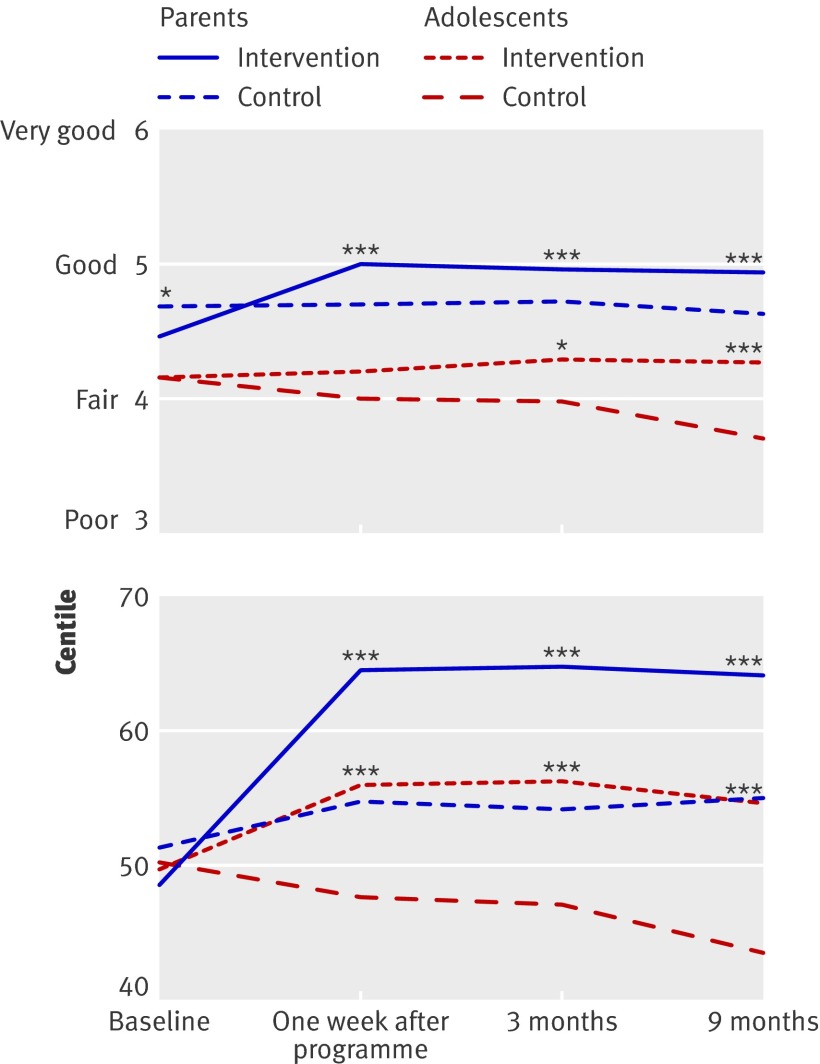Fig 4 Top: ability to communicate with adolescent/parent about sexual topics (How would you rate your ability to communicate with your child [mother/father] about sexual topics? excellent/very good/good/fair/poor/very poor/terrible). Bottom: openness of parent-adolescent communication scale (12 item scale for parents; 7 item scale for adolescents). Because units of scale have no absolute meaning, we have expressed all scores on this scale as centile of baseline distribution (control and intervention combined) to which they correspond. For example, score of 65th centile at three month follow-up for intervention group indicates that average intervention participant at three month follow-up had score better than 65% of participants at baseline. In tests for linear time trend across survey waves, the parent control group does not change significantly over four surveys (P=0.14), while parent intervention group increases significantly (P=0.001); adolescent control group declines significantly over time (P=0.006), while adolescent intervention group increases (P=0.005). *P<0.05; ***P<0.001 for intervention-control comparisons, tested with a linear regression predicting communication at each survey and controlling for communication at baseline

An official website of the United States government
Here's how you know
Official websites use .gov
A
.gov website belongs to an official
government organization in the United States.
Secure .gov websites use HTTPS
A lock (
) or https:// means you've safely
connected to the .gov website. Share sensitive
information only on official, secure websites.
